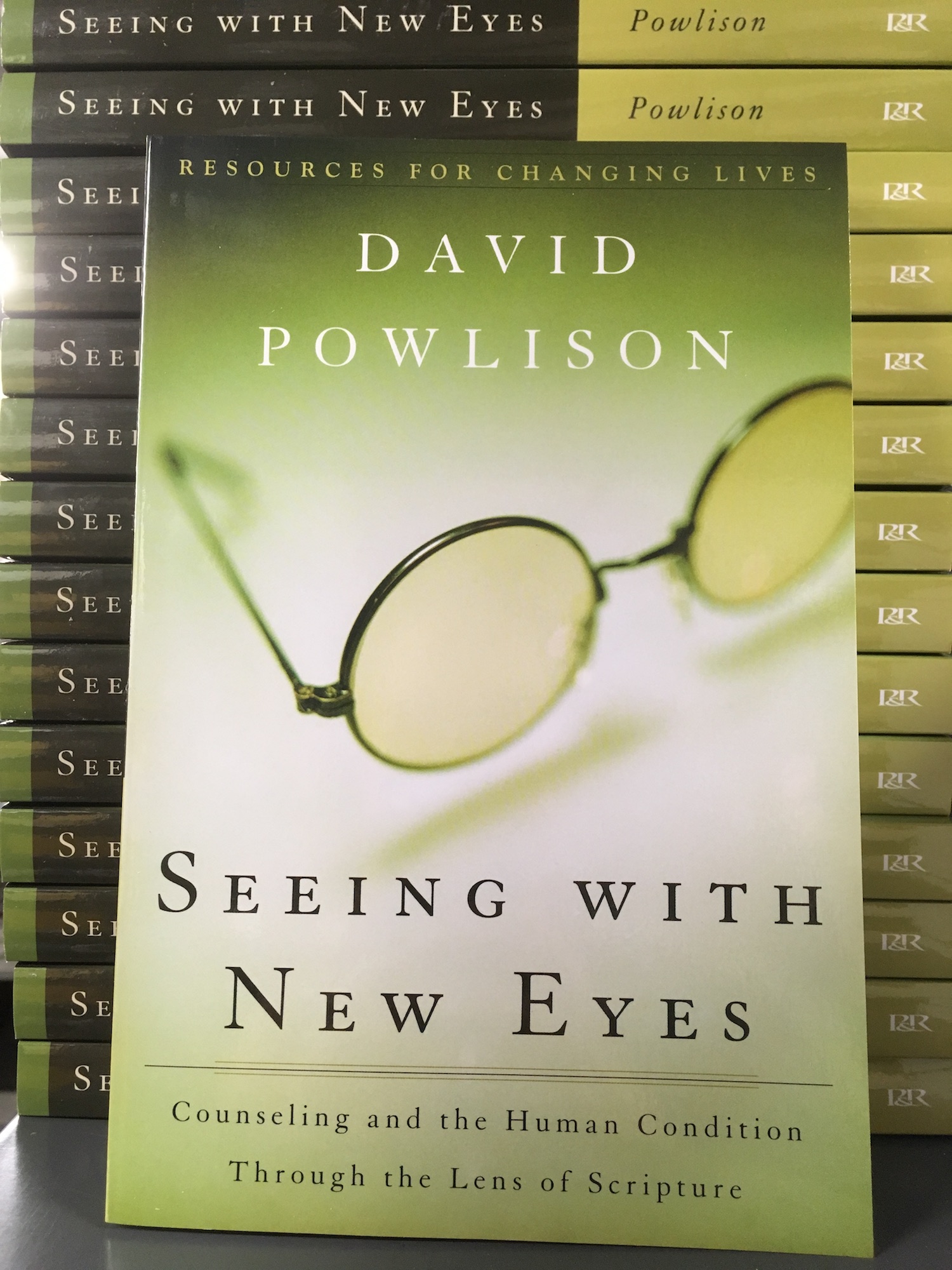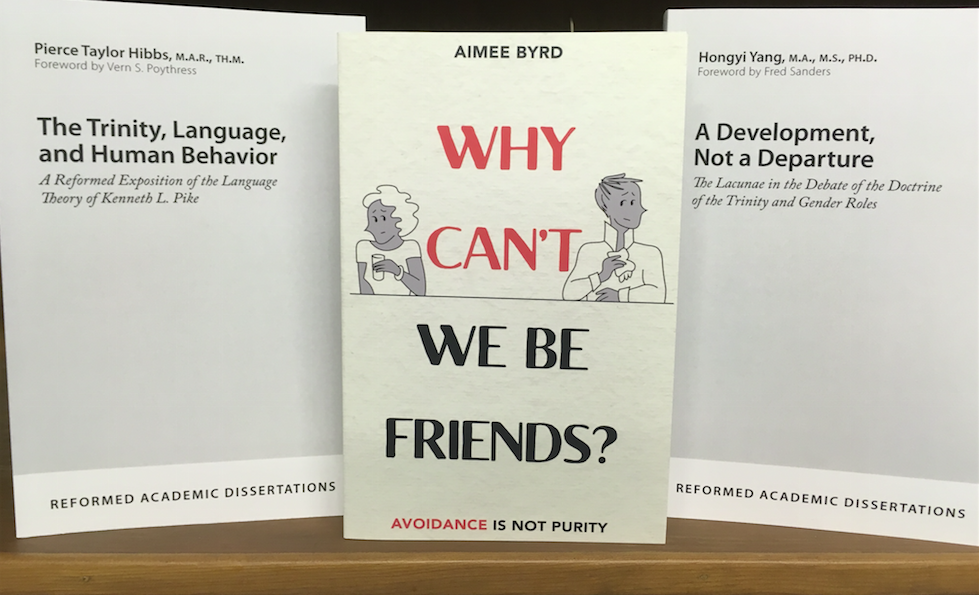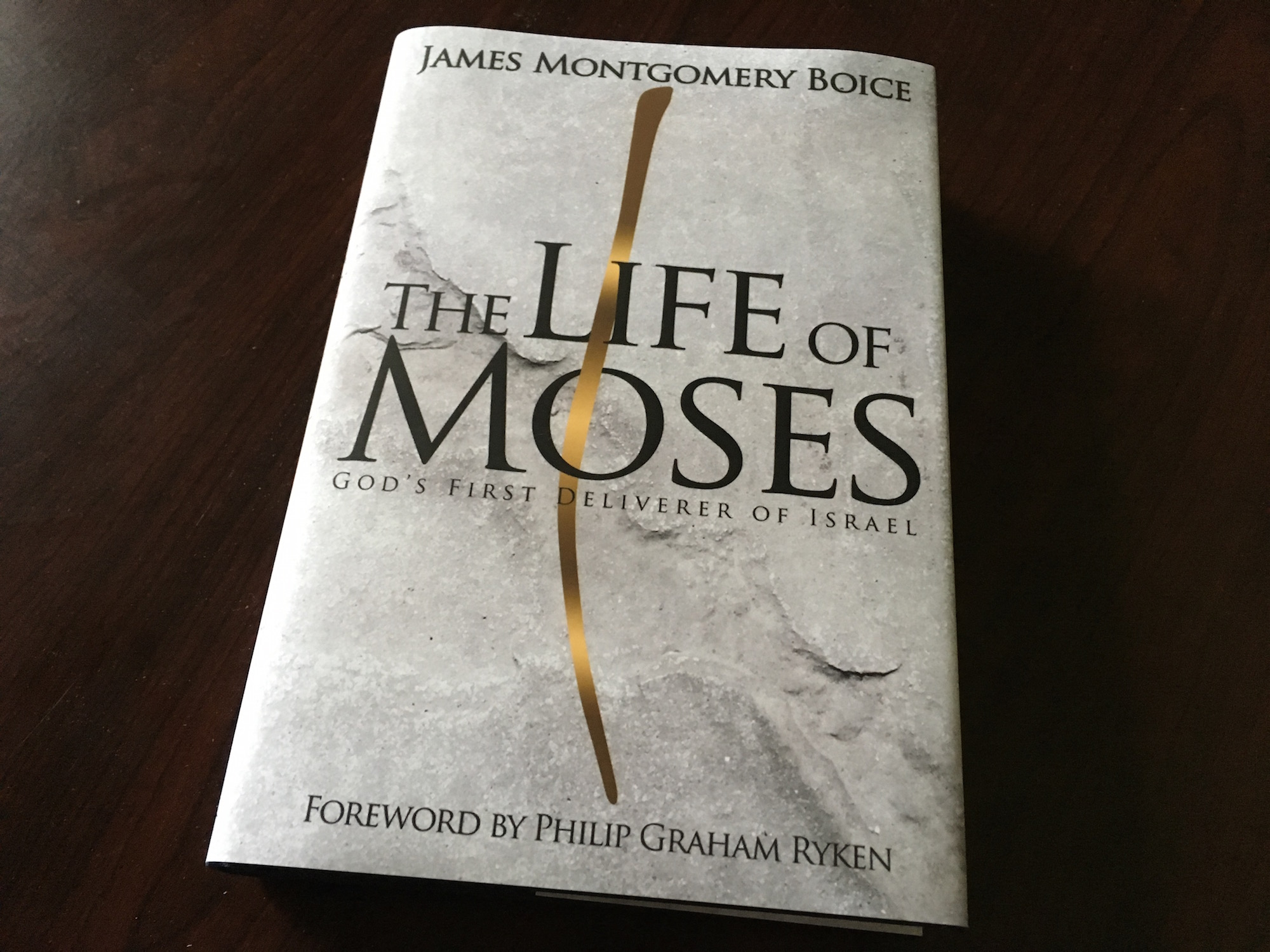Here is the Introduction to Theological English: An Advanced ESL Text for Students of Theology by Pierce Taylor Hibbs with Megan Reiley.
- Heritage Books: $25.00
- Gracebooksonline.com: $32.49
- Wtsbooks.com: $35.61
- Christianbook.com: $36.49
- Amazon: $36.71
Introduction
About the Textbook
In one sense, this textbook is not so special. While it is the product of years of teaching and research in the context of an intensive English program (IEP),*1 it simply attempts to implement the current practices of language learning pedagogy and to use theology as a context for teaching key language skills. The goal of this book, like other EAP (English for Academic Purposes) or ESP (English for Specific Purposes) textbooks,*2 is to teach English effectively and efficiently within a particular setting and for particular students.
However, in another sense, this textbook is quite special for several reasons. First, it is distinctly rooted in the Reformed theological tradition. Thus, the theology you will learn from this text as you improve your English is not a vague or generic form of Christian theology. It aligns with Reformed orthodoxy, as specifically expressed in the Westminster heritage.
Second, this text is written with a few special areas of focus for non-native speakers of English who are interested in theology. Perhaps the most noteworthy areas are an extended focus on advanced grammar for theological purposes and an introduction to, as well as practice within, specific theological genres: apologetics, biblical studies, church history, systematic theology, and practical theology. By practicing grammatical accuracy and precision, students are better equipped to communicate the truth of Scripture to a world desperately in need of the gospel. By studying traits and features of English within the above-mentioned genres, students are more prepared to read, write, listen, and speak theology effectively. Thus, this textbook uniquely serves students by helping them to grow in their expression and reception of theological English.
Third, in the “Tasks” in this textbook, we focus on helping students to use theological English to communicate gospel truths.*3 The tasks are meant to give students the opportunity to use the English skills they have acquired in ways that more easily transfer to real-life situations. Real-life situations for theology students, however, are unique. They might require writing an email to a head pastor or a congregant, discussing the gospel with a non-believer, or leading a weekly Bible study. The tasks in this book are thus meant to give theology students practice in the everyday tasks that they will encounter in ministry or teaching settings.
Fourth, the authors of this text have made a conscious decision to build upon principles of language that are informed by Scripture. In other words, we have certain assumptions about what language is and how it functions, and these assumptions affect the way in which we present English. All of these assumptions can be traced back to Scripture directly or indirectly, especially our assumptions that language is Trinitarian. Language can be and has been used to express the truth clearly and powerfully throughout history. The former assumption warrants some explanation.
Trinitarian Roots of Language
Language is Trinitarian in two senses.*4 First, in a broader sense, we believe that language originates with the Trinitarian, self-communing God of the Bible. From all eternity, the persons of the Godhead have “spoken” to each other in the sense that the Father, Son, and Holy Spirit eternally express love and glory toward one another. The Father loves the Son and shows him all that he does (John 5:20). The Son loves the Father by obeying his commands perfectly, just as he instructs his followers to do (John 14:15, 21, 23). And the Holy Spirit is the bond of personal love between the Father and the Son. In fact, “The Love-life whereby these Three mutually love each other is the Eternal Being Himself. . . . The entire Scripture teaches that nothing is more precious and glorious than the Love of the Father for the Son, and of the Son for the Father, and of the Holy Spirit for both.”*5 The same is the case with glory. In John 17:5, Jesus says, “Glorify me in your own presence with the glory that I had with you before the world existed.” In the preceding chapter, he proclaimed that the Spirit also glorifies him (John 16:14). Yet, Jesus longs for the Father to glorify him so that he can glorify the Father (John 17:1). And the reason the Son is glorified is that he gives life to all men who are dead in sins and trespasses (Rom. 6:11). While our life is in Christ, this life is none other than “the Spirit of life” (Rom. 8:2, 6), who is the Spirit of Christ (Rom. 8:9). Therefore, we can say that the Spirit shares in the glory of the Son as life-giver.*6
The divine, perpetual exchange of love and glory is the highest form of communication—the highest form of speech, of language. In short, because “there is—and has been from all eternity—talk, sharing and communication in the innermost life of God,”*7 we need to affirm that language, strictly speaking, is not a human invention; it is a divine gift.*8
Second, language is Trinitarian in a more specific sense. Language comprises three interlocking subsystems: grammar, phonology, and reference.*9 Many students are familiar with grammar, but phonology (how words and sentences are spoken) and reference (the relationship between words and what they stand for) are also critical. These subsystems are equally important and intersect in a manner analogous to the way in which the persons of the Godhead interlock or “coinhere” with one another.*10 We can associate each of these subsystems in language with a person of the Trinity:
Human purposes using the referential subsystem imitate God’s purposes, and more specifically the purposes of God the Father. Human speaking with sound imitates God’s utterances, which he utters through the power and “breath” of the Holy Spirit. Human speaking uses a language system, in imitation of God who uses the systematic wisdom of God the Son.*11
So, what we say (referential content) and the manner in which we say it (grammar and phonology) are equally important.
Now, what does any of this mean to the theology student who simply wants to improve his or her English? It means that we would encourage you throughout this textbook to consider the ways in which grammar and phonology affect your message with regard to clarity,  emphasis, and tone. At various places throughout the text, we will draw your attention to the way in which the interaction of these three subsystems of language affects a particular author’s sentence. Whenever you see the symbol on the right (G = grammar; P = phonology; R = reference), that means we are directing you to this Trinitarian feature of language. In light of this, do not cast aside grammar as relatively unimportant to getting your message across, as if to say to your readers, “They’ll understand what I mean anyway.” You cannot afford to neglect the development of the broad and deep knowledge of words, nor can you assume that if your grammar is accurate and your vocabulary adequate, then you can communicate clearly in speech. You need to improve in all three areas. Keeping this in mind has the potential to help you make more robust improvements in your understanding and use of English.
emphasis, and tone. At various places throughout the text, we will draw your attention to the way in which the interaction of these three subsystems of language affects a particular author’s sentence. Whenever you see the symbol on the right (G = grammar; P = phonology; R = reference), that means we are directing you to this Trinitarian feature of language. In light of this, do not cast aside grammar as relatively unimportant to getting your message across, as if to say to your readers, “They’ll understand what I mean anyway.” You cannot afford to neglect the development of the broad and deep knowledge of words, nor can you assume that if your grammar is accurate and your vocabulary adequate, then you can communicate clearly in speech. You need to improve in all three areas. Keeping this in mind has the potential to help you make more robust improvements in your understanding and use of English.
The Approach and Layout of the Textbook
The layout of this text is explained in more detail in Lesson 1. Each lesson includes a list of “Lesson Goals.” There is usually a goal in each of the following areas:
- Theology
- Reading
- Vocabulary
- Grammar
This text offers passive vocabulary development through exposure to a range of theological readings of different eras, with key terms glossed in the margins. Explicit vocabulary learning is encouraged through the collocation exercises in each lesson. This serves the larger end of developing grammar and reading skills in the context of theology.
Each lesson begins with an introduction and a few discussion questions. Then comes instruction on reading skills (one skill is taught per unit) before a passage of theology. Students then answer main idea and detail questions. These questions are often followed by an “Understanding the Reading” activity, a vocabulary exercise using collocations from the reading, and grammar exercises.
Twice in each unit, there are real-life tasks that will give you the opportunity to practice what you have learned in a concrete situation. Pay special attention to these tasks since they indicate how well you have understood and can apply what you are learning. If you are comfortable completing these tasks by the end of the textbook, that means you are in a better position to transfer what you have learned about theological English to your actual use of English in a theological setting.
Lastly, readers should know that this textbook is made for a classroom setting, and that is primarily how we use it. Some of the activities and exercises thus require group or pair-work. If you decide to use this text to study independently, note that the exercises requiring this work can be adapted for an individual student. Nevertheless, it is always good to learn language in community!
We hope that this textbook is of great help to you in your acquisition of theological English, and that our work serves as a small testimony to the greatness of the Trinitarian God who is redeeming all things in the person of his Son by the power of the Holy Spirit.
1. For details on the Mastering Theological English (MTE) program, see https://www.wts.edu/programs.
2. For example, Ken Paterson and Roberta Wedge’s Oxford Grammar for EAP: English Grammar and Practice for Academic Purposes (New York: Oxford University Press, 2013), or the particularly rich resource by Cheri L. Pierson, Lonna J. Dickerson, and Florence R. Scott, Exploring Theological English: Reading, Vocabulary, and Grammar for ESL/EFL (Carlisle, Great Britain: Piquant, 2010).
3. In this sense, we are following current practices of CLT (Communicative Language Teaching) and TBLT (Task Based Language Teaching), which are articulated in various ESL pedagogical texts.
4. In our assumptions about the Trinitarian nature of language, we are indebted to the work of Vern S. Poythress, especially his In the Beginning Was the Word: Language—A God-Centered Approach (Wheaton, IL: Crossway, 2009). But the Trinitarian nature of language has also been recognized by several theologians throughout church history. Another contemporary theologian who draws attention to this is Kevin J. Vanhoozer as seen in his Is There a Meaning in This Text? The Bible, the Reader, and the Morality of Literary Knowledge (Grand Rapids, MI: Zondervan, 1998), 455–57. I (Pierce) have also written about this in other places: Pierce Taylor Hibbs, “Closing the Gaps: Perichoresis and the Nature of Language,” Westminster Theological Journal 78 (2016): 299–322; “Words for Communion,” Modern Reformation 25, no. 4 (August 2016): 5–8.
5. Abraham Kuyper, The Work of the Holy Spirit, trans. Henry De Vries (Chattanooga, TN: AMG, 1995), 542.
6. For details, see Hibbs, “Closing the Gaps: Perichoresis and the Nature of Language.”
7. Douglas Kelly, Systematic Theology: Grounded in Holy Scripture and Understood in Light of the Church, vol. 1, The God Who Is: The Holy Trinity (Ross-shire, Scotland: Mentor, 2008), 487.
8. Poythress, In the Beginning Was the Word, 9. See also John M. Frame, The Doctrine of the Word of God, A Theology of Lordship (Phillipsburg, NJ: P&R, 2010), 48.
9. The three interlocking subsystems as being reflective of the Trinity goes back to the language theory of Kenneth L. Pike, of whom Poythress was a student. See Kenneth L. Pike, Linguistic Concepts: An Introduction to Tagmemics (Lincoln, NE: University of Nebraska Press, 1982), 13–15; and Poythress, In the Beginning Was the Word, 259–69. See also Pierce Taylor Hibbs, “Where Person Meets Word Part 1: Personalism in the Language Theory of Kenneth L. Pike,” Westminster Theological Journal 77, no. 2 (Fall 2015): 355–77; “Where Person Meets Word Part 2: The Convergence of Personalism and Scripture in the Language Theory of Kenneth L. Pike,” Westminster Theological Journal 78, no. 1 (Spring 2016): 117–34.
10. The “interlocking” of divine persons is called perichoresis or “coinherence” by theologians. For a few ancient and contemporary expressions of this concept, see Augustine, De Trinitate 6.10; John of Damascus, Writings, The Fathers of the Church 37, trans. Frederic H. Chase (Washington, DC: The Catholic University of America Press, 1958), 182–85; John M. Frame, Systematic Theology: An Introduction to Christian Belief (Phillipsburg, NJ: P&R, 2013), 479–81; and Robert Letham, The Holy Trinity: In Scripture, History, Theology, and Worship (Phillipsburg, NJ: P&R, 2004), 365–66.
11. Poythress , In the Beginning Was the Word, 267.






